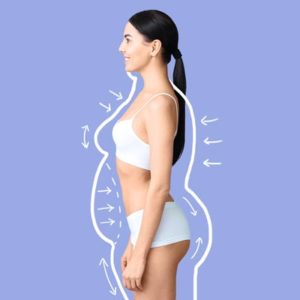Last Modified on October 30, 2023 by Dr. Tyler Meier

At Coreposture in Newport Beach, CA, we often hear this question: “is a slipped disc really that serious?” People hear the term “slipped disc” and either don’t know what it means or assume that it’s either very minor or very serious. The truth is, there are many levels of slipped disc, and depending on what level is being experienced, the side effects or symptoms can vary. Some people may be completely immobilized from a slipped disc, and others may not even realize it until they suddenly experience a back spasm or some other symptom. To best understand what a slipped disc is, and how it can affect you, read on!
What is a slipped disc?
“Slipped disc” is a vague term, and in some ways, it’s not completely accurate. The idea of “slipped disc” conjures up images of some slippery, gooey substance, or something that has moved significantly from where it’s supposed to go. A slipped disc is neither of these things.
Your spine is made up of bone and cartilage. The bone portion is what we commonly think of as the spine, which looks similar to a long, white, boney zipper. In between each stacked vertebrae is a pad that helps to absorb shock and aid flexibility. This pad is called a “disc,” and it is encased by cartilage. On the inside of the cartilage is a more gelatinous substance that provides the necessary shock-absorbing qualities.
The spine is one of the most important structures in the human body. It allows us to move around, holds our bodies upright, allows the nervous system to function, and anchors the rest of our body structure. The padding between each vertebra of the spin—the spinal discs—are equally important.
When a disc “slips,” this means that the padding between the spine’s vertebrae has become disturbed. The cartilage that holds in the gelatinous part of the disc has moved, usually pushing out of the spinal canal where it’s meant to be situated. The problem with this is that there is no room outside of the spinal canal for the discs of the spine.
When the disc pushes out of the spinal canal, it comes into contact with nearby nerves and tissues. This often causes inflammation, and almost always, pain. A slipped disc can cause other problems, too. Because of the protrusion of the disc from the spinal canal, any nerves and nearby tissues, and muscles can be affected. This can lead to back spasms, weakness, muscle knots, constant backache, pain and discomfort, and a host of other unpleasant symptoms.
What do I do if I think I have a slipped disc?
If you think you have a slipped disc, it’s important to take action. If you don’t treat a slipped disc, it can turn into permanent nerve damage. More people are walking around with untreated slipped discs than you think. In fact, symptoms of untreated slipped discs are very common, and are often confused with sciatica (or result in sciatic pain). If you don’t treat a slipped disc early, you can expect to feel symptoms like numbness and tingling, loss of sensation in the extremities (like fingertips and toes, which may come and go), and sharp pain. These symptoms can become permanent if the slipped disc is never properly treated.
Receiving Treatment for Slipped Discs
At CorePosture Chiropractic in Newport Beach, CA – we see patients seeking treatment for slipped discs almost daily. This is because slipped discs are extremely common. A lot of people expect to experience sudden pain or debilitation when they slip a disc, but this isn’t necessarily the case. The process of slipping a disc can actually be very gradual—it’s not necessarily something that happens on a single occasion. What can happen on a single occasion, however, is an injury or strain that causes the pain and side effects of the slipped disc to flare up. It’s at this point that patients often realize that something has gone wrong.
Slipped Disc from Lifting
It’s possible to slip a disc from lifting, especially repeated lifting over time. Regular lifting with poor posture, or with a spine that is misaligned, can cause spinal discs to be forced out of the spinal canal slowly. This can actually build up over the course of months, or even years. Eventually, one particular lift will be the “straw that breaks the camel’s back,” and a sharp pain, back spasm, muscle weakness, or tingling and numbness.
Slipped Disc from Bending
Another way to slip a disc is through repeated bending. Just like with lifting, it won’t happen right away. Repeated bending and twisting, particularly with poor posture or with a spine that is already misaligned, is likely to cause a slipped disc. This happens by contorting the spine repeatedly without having sufficient support from muscles and the spinal structure. A combination of poor posture, hasty movement, and imbalanced spinal alignment can contribute to slipped discs from bending.
Slipped Disc from Sitting
Over time, sitting can lead to a slipped disc. This can often come as a surprise to patients, who understand sitting to be a low-impact activity—and they’re right! But slipped discs aren’t just about impact. Slipped discs can happen as a result of putting prolonged pressure on the spine and spinal canal, and when this happens, the cushiony disc inside can begin to push out where it’s not supposed to be. Poor posture while sitting, or poor lumbar support while sitting, are common culprits.
Slipped Disc from Running
It’s unusual to experience a slipped disc only from running—people who slip discs while running are typically either regular runners who run at least 20 miles a week or people who have had herniated discs before. Form and intensity of running sessions can cause slipped discs, or cause a previously slipped disc to become exacerbated and flare back up. Patients who are regular runners and have had a slipped disc in the past often find themselves with slipped discs periodically, either as a result of their form or unresolved spinal alignment issues.
Slipped Disc from Falling
Slipped discs from falling are very common. A fall, even if it doesn’t seem to directly affect the spine, is a common way to cause a slipped disc. Falling can cause the spine to contort in an attempt to catch or soften the landing. When this happens, the spinal discs can be forced out of the spinal canal. After a fall, this can feel like soreness and inflammation. As time goes on, it can result in numbness, tingling, sharp pain, and periods of time when there is a lack of sensation in the fingers and toes. People who say that their back has “never been the same” after a fall are often suffering from an untreated slipped disc.
Slipped Disc from Car Accident
Another common way to experience a slipped disc is from a car accident. Unfortunately, even minor car accidents can result in a slipped disc. This is because the force of impact during a crash can place significant pressure on the spinal canal, causing it to compress. When this happens, one or more discs can slip or begin to slip out of place, causing immediate or future pain.
Chiropractic Care in Newport Beach, CA
Are you suffering from a slipped disc and looking for chiropractic care in Newport Beach, CA? At our chiropractic office in Irvine, we offer expert chiropractic care for slipped discs. Among our treatments are spinal traction, traditional adjustments, scoliosis correction, and global care. Dr. Tyler has helped to provide pain relief for thousands of patients suffering from slipped discs, spinal misalignment, and a wide variety of symptoms like acid reflux, neck pain, GERD, shoulder pain, back pain, and more. Call ourIrvine chiropractic office today, or contact us here to book your first appointment. We can’t wait to help you achieve your best health yet!

Dr. Tyler Meier is a board-certified, licensed chiropractor and founder of CorePosture Chiropractic in Newport Beach, CA







